Baby monitors are an essential tool for new parents, providing peace of mind when their little one is sleeping. However, where to mount baby monitor is just as important as the device itself. Finding the right location to mount the monitor can be a challenge, but with a little knowledge and understanding, parents can ensure that their baby is safe and secure.
Understanding the different types of baby monitors available on the market is the first step in determining where to mount them. Some monitors come with a camera that can be mounted on a wall or placed on a shelf, while others are designed to be handheld. Safety considerations in mounting the monitor are also important, as cords and mounting hardware can pose a risk to curious little ones.
Key Takeaways
- Understanding the different types of baby monitors available is important in determining where to mount them
- Safety considerations in mounting the monitor are important to ensure the safety of the baby
- Ideal baby monitor placement will depend on the layout of the room and the needs of the parents
Understanding Baby Monitors
Baby monitors are essential devices for parents who want to keep an eye on their little ones while they sleep or play. They come in different types, including audio, video, and smart baby monitors.
Audio baby monitors are the most basic type and only transmit sound from the baby’s room to the parent unit. Video baby monitors, on the other hand, have a camera unit that captures video footage of the baby and transmits it to the parent unit. Smart baby monitors use Wi-Fi and an app to allow parents to monitor their baby from their smartphone or tablet.
When choosing a baby monitor, parents should consider the features that matter most to them. For instance, a video baby monitor may be more suitable for parents who want to see their baby, while an audio baby monitor may be enough for those who only want to hear their baby.
The Lollipop Baby Monitor is an example of a smart baby monitor that combines audio, video, and other features. It has a camera unit with a microphone that captures sound and video footage of the baby and transmits it to the parent unit or a smartphone via Wi-Fi. The Lollipop Baby Monitor app also allows parents to set alerts for sound and motion detection and view a live stream of their baby’s room.
In conclusion, understanding the different types of baby monitors and their features is crucial when choosing the best baby monitor for your needs. Whether you prefer an audio, video, or smart baby monitor, there are many options available to help you keep an eye on your little one.
Safety Considerations in Mounting
When it comes to mounting a baby monitor, safety should be the top priority. There are several safety considerations to keep in mind to ensure that the baby monitor is mounted securely and safely.
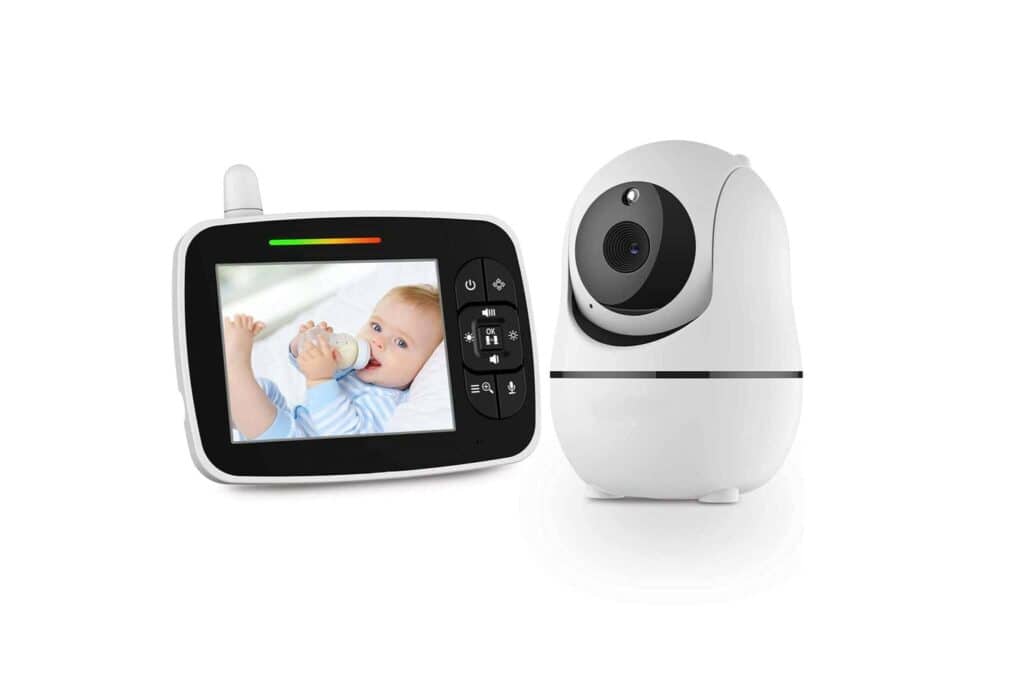
One of the most important safety considerations is the risk of strangulation. It is important to make sure that the baby monitor is mounted out of reach of the baby and that there are no cords or strings that the baby can reach. This is especially important for younger babies who may be more prone to putting things in their mouth.
Another safety consideration is the risk of cords. It is important to make sure that the cords are properly secured and that there are no loose cords that the baby can pull on. This can be especially important if the baby monitor is mounted on a wall, as the cords may be more visible and accessible to the baby.
There is also a concern about electromagnetic radiation and its potential effects on health and safety. While there is no conclusive evidence to suggest that baby monitors pose a significant risk, it is still important to take precautions. This may include choosing a baby monitor with lower radiation levels or keeping the monitor a safe distance away from the baby.
In addition to these safety risks, there are also safety precautions that should be taken when mounting a baby monitor. This may include using a secure mounting bracket or ensuring that the monitor is mounted on a stable surface. It is also important to consider cord management and to make sure that the cords are not twisted or tangled.
Overall, when mounting a baby monitor, it is important to take all necessary safety precautions to ensure that the baby monitor is mounted securely and safely. By keeping these safety considerations in mind, parents can have peace of mind knowing that their baby is safe and secure.
Ideal Baby Monitor Placement
When it comes to baby monitor placement, there are a few things to consider to ensure the best possible viewing angle and sound quality. The following tips will help you position your baby monitor in the optimal location:
Crib Mount
Mounting the baby monitor on the crib is a popular choice for many parents. This allows for a clear view of the baby and is especially useful for newborns who spend a lot of time sleeping in their crib. However, it is important to ensure that the monitor is not within reach of the baby and that the cords are kept out of harm’s way.
Proper Viewing Angle
Positioning the baby monitor at the correct angle is crucial for optimal visibility. It should be placed at a height that allows for a clear view of the baby, but not so high that it only captures the ceiling. The ideal viewing angle is slightly above the level of the baby’s head.
Viewing Angle and Sound
In addition to the viewing angle, the sound quality is also important. The baby monitor should be positioned in a way that allows for clear sound transmission. This means that it should not be too far away from the baby, but also not too close that it picks up unnecessary background noise.
Positioning
The location of the baby monitor is also important. It should be placed in a position that allows for easy viewing and accessibility. This means that it should not be too far away from the caregiver, but also not too close that it becomes a distraction.
Visibility
Finally, it is important to test the visibility of the baby monitor from different angles and positions. This will ensure that the baby is always within view and that the caregiver can monitor them at all times.
By following these tips, parents can ensure that their baby monitor is positioned in the optimal location for the best possible viewing angle and sound quality.
Mounting Options for Baby Monitors
When it comes to mounting a baby monitor, there are several options available. The choice of mounting option will depend on the layout of the room, the type of furniture available, and personal preference. In this section, we will explore some of the most common mounting options for baby monitors.
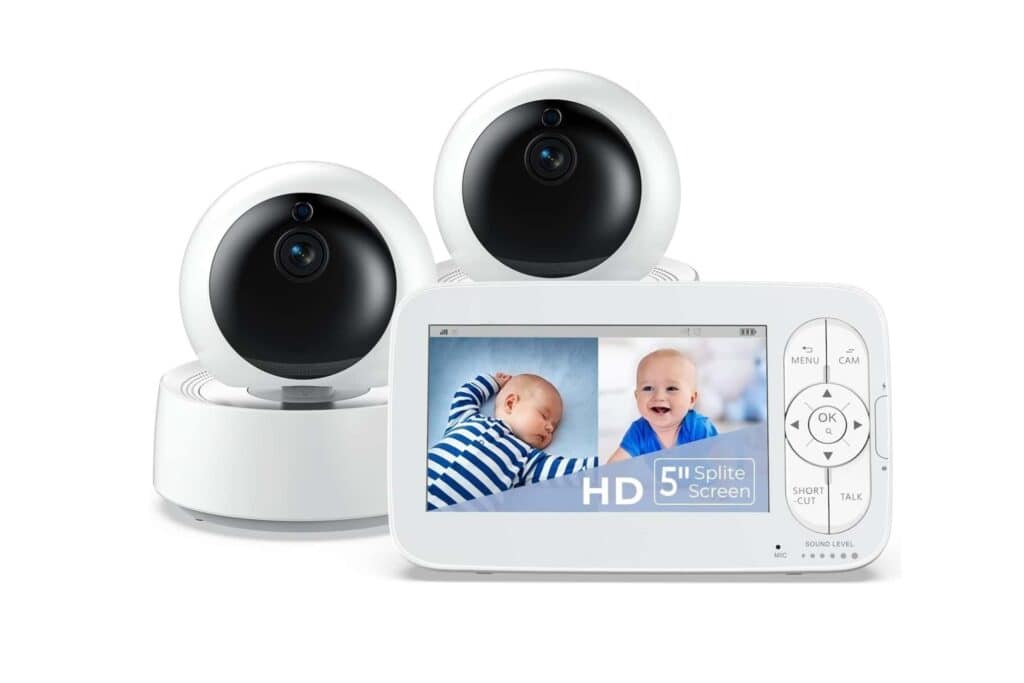
1. Wall Mount
Wall mounting is a popular option for baby monitors. It allows the monitor to be fixed at a height that provides a good view of the baby’s crib. Wall mounts come in different sizes and shapes, and they can be fixed using screws or adhesive strips. Some baby monitors come with a wall mount, while others require a separate purchase.
2. Shelf
A shelf is another popular option for mounting a baby monitor. It allows the monitor to be placed at a convenient height and angle. Shelves can be made of different materials, including wood, plastic, or metal. Some baby monitors come with a shelf mount, while others require a separate purchase.
3. Furniture
Mounting a baby monitor on furniture is also an option. This can include a dresser, changing table, or bookshelf. The monitor can be placed on top of the furniture or attached to it using a universal baby monitor mount or clip. It is important to ensure that the monitor is stable and secure when mounted on furniture.
4. Tripod
A tripod is a versatile option for mounting a baby monitor. It allows the monitor to be placed at different heights and angles, and it can be moved around the room easily. Tripods come in different sizes and shapes, and they can be made of different materials, including plastic and metal.
5. Ceiling Mount
Ceiling mounting is a less common option for baby monitors, but it can be useful in certain situations. It allows the monitor to be fixed at a high position, providing a good view of the entire room. Ceiling mounts can be fixed using screws or adhesive strips.
6. Other Mounting Options
Other mounting options for baby monitors include corner shelves, table mounts, and mounting the monitor to the crib. It is important to choose a mounting option that provides a good view of the baby and is stable and secure.
In conclusion, there are several mounting options available for baby monitors. The choice of mounting option will depend on the layout of the room, the type of furniture available, and personal preference. It is important to choose a mounting option that provides a good view of the baby and is stable and secure.
Installation Process
Installing a baby monitor can be a straightforward process if done correctly. The following steps can guide parents on how to install a baby monitor:
- Choose the right location: The first step in installing a baby monitor is to decide where to place it. The monitor should be placed in a location that provides an unobstructed view of the baby’s crib or play area. It should also be placed at a height that allows the camera to capture a clear view of the baby.
- Mount the camera: Once the location has been chosen, the next step is to mount the camera. Some baby monitors come with a mounting bracket, while others require drilling holes into the wall. If drilling is necessary, it is important to ensure that the drill holes are level and that the camera is securely mounted.
- Set up the monitor: After the camera has been mounted, the next step is to set up the monitor. This involves connecting the monitor to a power source and pairing it with the camera. Some monitors also require the installation of additional hardware, such as a Wi-Fi extender or a range booster.
- Test the monitor: Once the monitor has been set up, it is important to test it to ensure that it is working correctly. This involves checking the camera’s view, adjusting the angle if necessary, and testing the sound and video quality.
By following these steps, parents can install a baby monitor with ease and ensure that their little one is always within sight and sound.
Special Features and Functionality
When it comes to baby monitors, there are several special features and functionalities that parents should consider before making a purchase. Here are some of the key features that parents should look for:
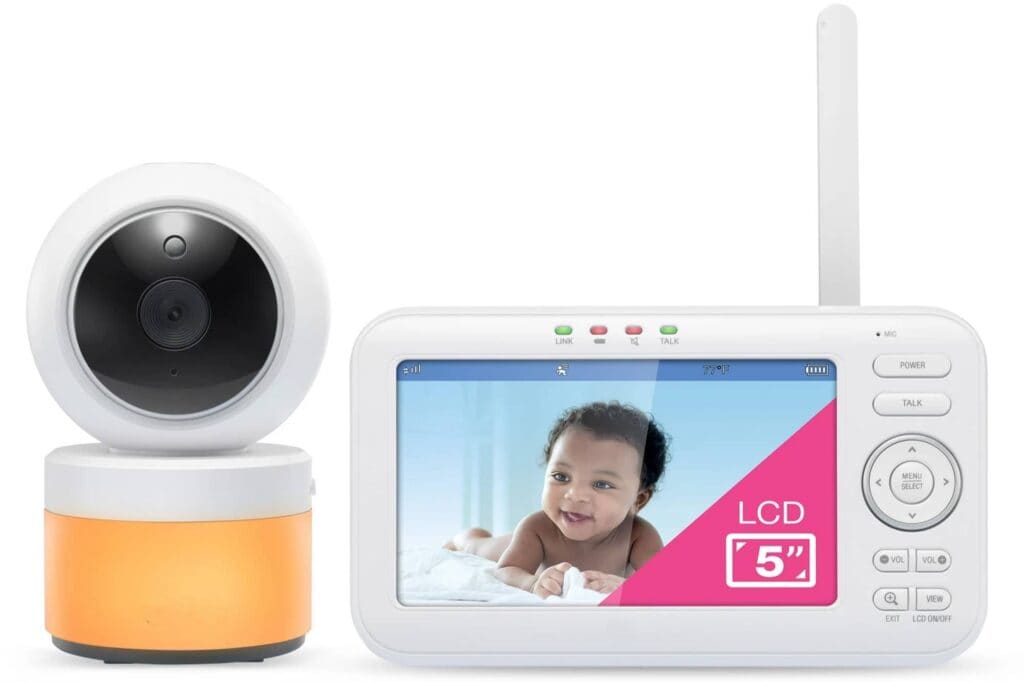
Night Vision
Night vision is an essential feature for baby monitors, as it allows parents to keep an eye on their baby even in low-light conditions. Most baby monitors come with infrared night vision, which provides clear images even in complete darkness. This feature is particularly useful for parents who want to check on their baby without disturbing their sleep.
Remote Pan and Tilt
Some baby monitors come with remote pan and tilt functionality, which allows parents to adjust the camera angle from a remote location. This feature is particularly useful for parents who want to keep an eye on their baby as they move around the room. With remote pan and tilt, parents can easily adjust the camera angle to get a better view of their baby.
Coverage
Another important feature to consider is the coverage area of the baby monitor. Parents should choose a monitor that covers the entire room, so they can keep an eye on their baby no matter where they are in the room. Some baby monitors come with a wide-angle lens, which provides a wider coverage area.
Functionality
The functionality of the baby monitor is also an important consideration. Some baby monitors come with features like temperature monitoring, two-way communication, and lullabies. Parents should choose a monitor that has the features they need to keep their baby safe and comfortable.
Multiple Cameras
Finally, parents who want to monitor multiple rooms should look for a baby monitor that supports multiple cameras. With multiple cameras, parents can keep an eye on their baby in different rooms and switch between cameras as needed.
Overall, there are several special features and functionalities that parents should consider when choosing a baby monitor. By choosing a monitor with the right features, parents can ensure that their baby is safe and comfortable at all times.
Choosing the Right Location in the Nursery
When it comes to choosing the right location to mount a baby monitor, there are a few things to keep in mind. The nursery’s layout, decor, and furniture placement can all impact the effectiveness of the monitor. Here are some factors to consider when selecting a location for your baby monitor:
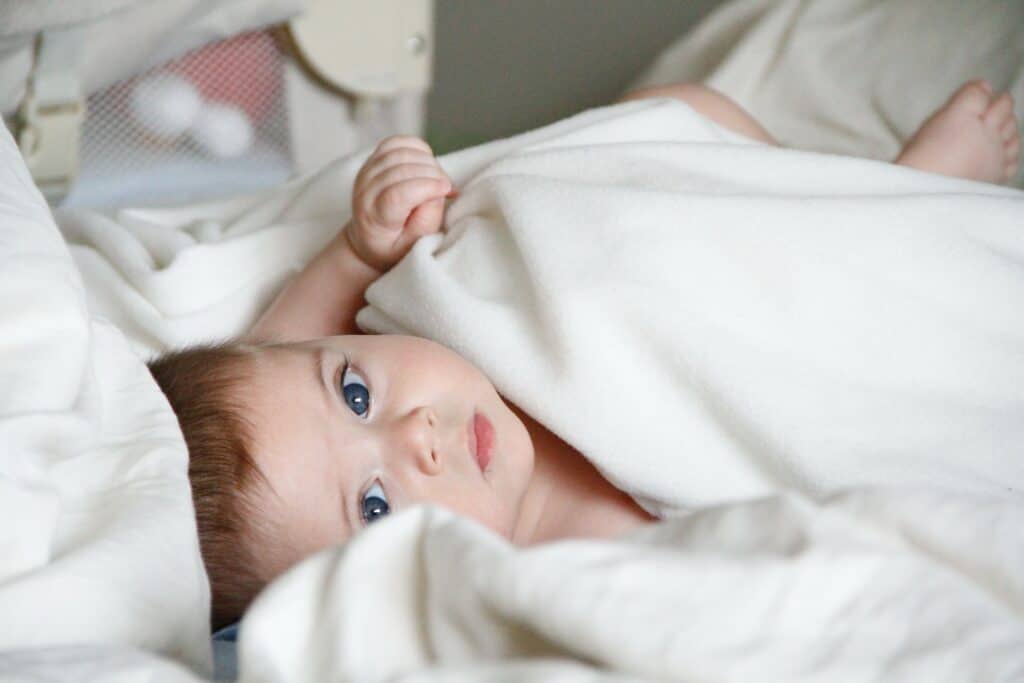
1. Nursery Layout
Before choosing a spot to mount the baby monitor, it’s important to consider the layout of the nursery. If the crib is against one wall and the changing table is on another, it may be necessary to mount the monitor in a central location to ensure it can capture both areas. Similarly, if the nursery has an open floor plan, it may be necessary to mount the monitor in a location where it can capture multiple areas of the room.
2. Decor
While the decor of the nursery may not seem like an important factor when it comes to mounting a baby monitor, it can actually impact the monitor’s effectiveness. For example, if the nursery has a lot of soft surfaces, such as curtains or plush toys, it may be necessary to mount the monitor in a location where it can capture sound more effectively. Additionally, if the nursery has a lot of bright colors or patterns, it may be necessary to mount the monitor in a location where it can be easily seen without blending in with the decor.
3. Furniture Placement
The placement of furniture in the nursery can also impact the effectiveness of the baby monitor. For example, if the crib is against a wall, it may be necessary to mount the monitor in a location where it can capture sound from the baby’s position. Similarly, if there is a corner shelf or other piece of furniture that could block the monitor’s view, it may be necessary to mount the monitor in a location where it can see over or around the furniture.
4. Vusee Corner
If you have a Vusee Corner in your nursery, it can be a great location to mount your baby monitor. The Vusee Corner is a clear, acrylic shelf that attaches to the corner of a wall, providing a clear view of the entire room. By mounting the baby monitor on the Vusee Corner, you can ensure that it has an unobstructed view of the entire nursery.
5. Baby Monitor Shelves
Another option for mounting a baby monitor is to use a dedicated shelf designed specifically for baby monitors. These shelves are typically small and can be mounted on a wall or placed on a flat surface. By using a dedicated shelf, you can ensure that the monitor is always in the same location and has an unobstructed view of the baby.
Conclusion
Choosing the right location to mount a baby monitor is an important decision that can impact the effectiveness of the monitor. By considering the layout of the nursery, the decor, and the placement of furniture, you can select a location that provides the best view of your baby. Additionally, using a Vusee Corner or a dedicated baby monitor shelf can provide additional options for mounting your monitor.
Power Source and Cord Management
When setting up a baby monitor, it’s important to consider the power source and cord management. Here are some tips to ensure your baby monitor is safely and effectively powered:
- Choose a power outlet: First and foremost, choose a power outlet that is easily accessible and close to where you want to mount the baby monitor. Avoid using extension cords or power strips, as they can pose a tripping hazard and increase the risk of electrical fires.
- Consider battery-powered options: If you don’t have a convenient power outlet nearby, consider using a battery-powered baby monitor. This can be especially useful for portable monitors that can be easily moved from room to room.
- Manage cords properly: When using a corded baby monitor, make sure to manage the cords properly to avoid tangling or tripping hazards. Use cable ties or cord clips to secure the cords to the wall or furniture, and avoid running them across high-traffic areas.
- Hide cords from curious little hands: Babies and toddlers are naturally curious, so make sure to hide cords from their reach. Use cord covers or run the cords behind furniture to keep them out of sight and out of mind.
By following these tips, you can ensure that your baby monitor is safely and effectively powered, and that cords are managed properly to avoid any potential hazards.
Ensuring Peace of Mind
When it comes to ensuring the safety and security of your baby, a baby monitor is an essential tool. However, it is important to mount the baby monitor in the right location to ensure maximum effectiveness and peace of mind.
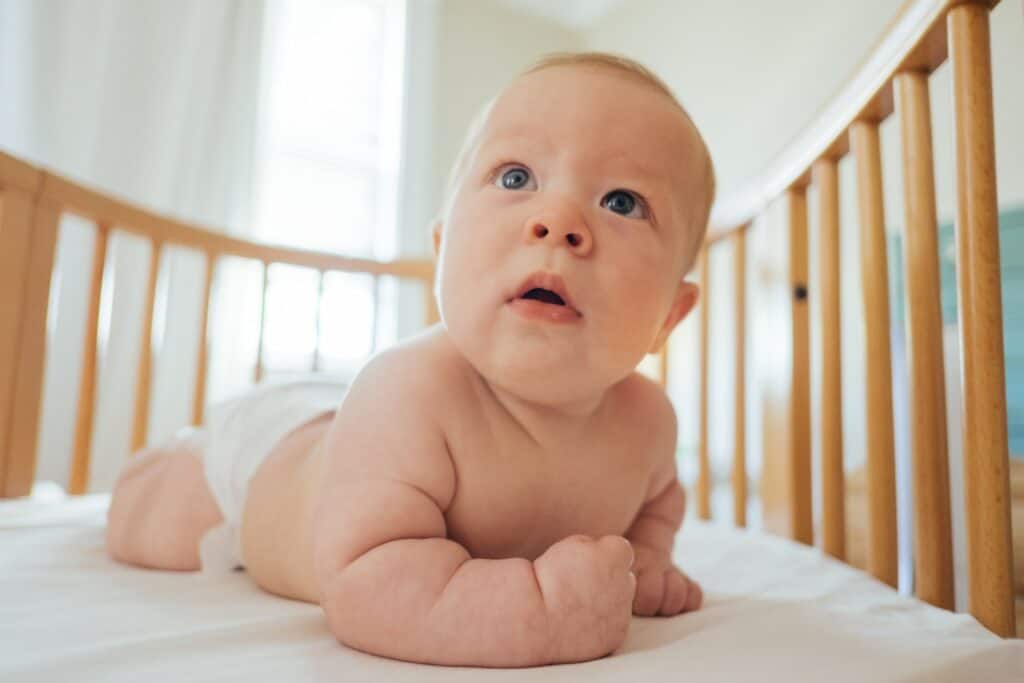
To ensure peace of mind, it is important to mount the baby monitor in a secure location that is out of reach of children. This will prevent the baby monitor from being accidentally knocked over or damaged, and will also prevent children from tampering with the device.
In addition to security, convenience is also an important factor to consider when mounting a baby monitor. The monitor should be placed in a location that provides a clear view of the baby’s crib or sleeping area, while also being easily accessible for adjustments and monitoring.
To achieve the best results, it is recommended to mount the baby monitor on a wall or other flat surface using the included mounting hardware. This will provide a stable and secure mounting location that will ensure the monitor stays in place and provides a clear view of the baby.
Overall, by ensuring the baby monitor is mounted in a secure and convenient location, parents can have peace of mind knowing that their baby is safe and sound.
Journal and Baby Monitor Review
When it comes to keeping an eye on your baby, a baby monitor is an essential tool. However, finding the right place to mount it can be a challenge. In this section, we will take a look at some of the best options for mounting your baby monitor, as well as some tips on how to get the most out of it.
One great option for mounting your baby monitor is on the wall. This can be done using a simple mounting bracket, which can be easily installed with screws or adhesive. By mounting your monitor on the wall, you can get a clear view of your baby without having to worry about it being knocked over or misplaced.
Another option is to mount your baby monitor on a shelf or dresser. This can be a good choice if you want to keep the monitor close to your baby’s crib or bassinet. Just be sure to choose a sturdy surface that can support the weight of the monitor.
If you prefer to keep your baby monitor portable, you can also mount it on a stand or tripod. This can be a great option if you want to move the monitor around the room or take it with you when you travel.
When choosing a location to mount your baby monitor, it’s important to consider the range of the monitor. Be sure to test the monitor in different locations to find the best spot for it. Additionally, keep in mind that some monitors may have a better range than others, so be sure to read reviews and do your research before making a purchase.
Overall, there are many great options for mounting your baby monitor. By taking the time to find the right spot for it, you can ensure that you always have a clear view of your baby and that your monitor is always within reach.
Frequently Asked Questions
What are some creative DIY baby monitor mounting options?
There are several creative DIY baby monitor mounting options you can try. You can use a bookshelf or a nightstand to place the monitor, or you can attach it to the ceiling with a clamp. Another option is to use a flexible tripod to mount the camera on a nearby piece of furniture.
What is the best angle to mount a baby monitor camera?
The best angle to mount a baby monitor camera is from above the crib, looking down. This angle allows you to see the entire crib and the baby’s movements without obstruction.
Can you mount the VTech baby monitor on a crib?
It is not recommended to mount the VTech baby monitor on a crib. The monitor should be placed at least 3 feet away from the crib to avoid any potential hazards.
Should you mount your baby monitor on the wall or place it on a shelf?
It depends on personal preference and the layout of the room. If the crib is against the wall, mounting the monitor on the wall may be the best option. If the crib is in the center of the room, placing the monitor on a nearby shelf may be more practical.
How close should the baby monitor be to the crib?
The baby monitor should be placed at least 3 feet away from the crib to avoid any potential hazards. It should also be positioned in a way that provides a clear view of the baby.
At what age should you stop using a baby monitor?
It is recommended to stop using a baby monitor when the child is around 2 years old or when they are able to communicate effectively. However, it ultimately depends on the parents’ preference and the child’s individual needs.

Iesha is a loving mother of 2 beautiful children. She’s an active parent who enjoys indoor and outdoor adventures with her family. Her mission is to share practical and realistic parenting advice to help the parenting community becoming stronger.
